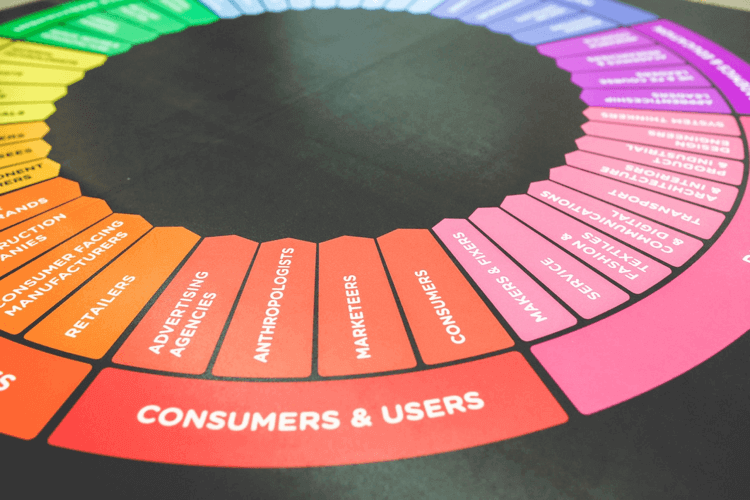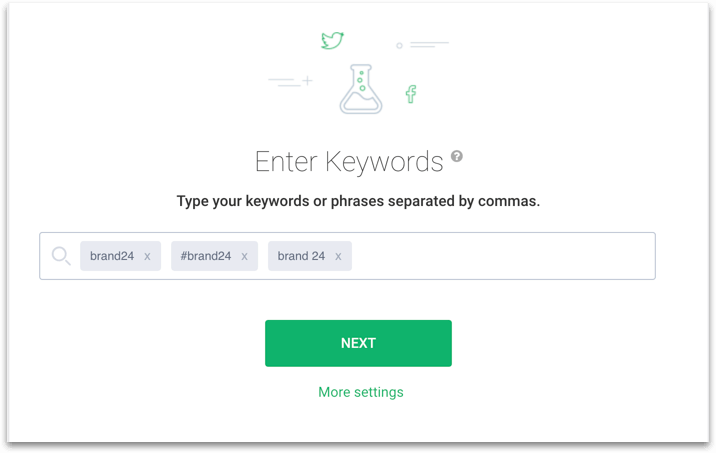How to Perform an AI Customer Experience Analysis
Table of contents
Analysing customer experience is one of the key activities while expanding your company. The old business saying states “if you make it, they’ll come”. It shows the old product-centric approach to market; a belief that customers will focus on the product’s features rather than its practical applications. But we’re witnesses to change. Shortly, the centre of gravity will lie much more on providing an exquisite customer experience than constructing innovative products or services.
By 2020 customer experience (CX) will be the cornerstone of any business strategy. Not only your marketing or customer satisfaction teams will be part of customer experience management; if you want to survive in the competitive digital and an always-on world, more departments will have to become customer-centric units.
Walker Consulting prepared a comprehensive report about the future of customer service. According to their findings, within the next two years, CX will be the make-it-or-break-it factor as well as a key distinction between companies. Those who understand CX will grow and increase revenue. Others will not. Tough business rules – adapt or die.
The change has already started. 86% of existing and potential clients are willing to pay more for a better customer experience.
If you’re wondering how to improve customer experience, we got you covered. In this post, we’re going to take a look at what customer analysis is, where to find all the necessary information and how to use them to your advantage.
What Is Customer Experience Analysis
Customer analysis is a measure of how your product or service falls short, meets or exceeds customer expectations.
Expansion of Facebook, Twitter, and other social networks shifted the power from companies to consumers. A single Facebook post or tweet has the ability to reach thousands of people around the globe, causing shares either to drop or skyrocket.
Remember Kylie Jenner’s tweet that supposedly cost Snapchat 1.3 billion dollars? Even if the exact number is highly exaggerated, the stock reaction to social media mention shows a deeper trend.
Not only Jenner was unhappy with Snapchat design changes, but also millions of her followers. They agreed with her, voted with their feet and stopped using the app. All because Snapchat didn’t listen to their users.
On the other end of the customer experience spectrum are companies that excel in assisting their customers. Take a look at Futuramo, a SaaS business that offers tools that help teams communicate, collaborate and manage projects. Futuramo uses Brand24 to spot customers seeking assistance all over the web.
“The market is very competitive, if you’re not there for your customers, you’re missing out. Thanks to Brand24, we’ve got that covered.”
Magda Wermińska, Futuramo
More accurate term than customer experience should be customer obsession. Customers expect products and services to provide a “frictionless” experience. Companies have to go an extra mile to meet clients’ expectations.
Relevant Read: 10 Examples of Going an Extra Mile in Customer Service
Both existing and target customers demand a complete knowledge of their business needs. You should identify and anticipate the problems before they occur, so a switch from a reactive to a proactive approach is inevitable.
“When I talk to customers, they want us to know the fingerprints and forensics of what they have been through.” Vice President, Customer Support Services, Network Storage Company
How to Conduct Customer Experience Analysis
The first step in customer analysis is to determine what your customer service is missing. The more details you collect, the more accurate your review will be.
Know thy customer
Customer behaviour analysis is all about research and data. You have to understand the needs and wants of your customers and show how your product will make their lives easier.
Thankfully, you can extrapolate the data you already have to potential customers. In the end, you should find an answer to the questions – what motivates people to buy your product? How can you improve interactions with your clients to maximise customer lifetime value?

You should start with an in-depth examination of your current clients’ database. It should contain demographic data, such as age, gender, or location of your clients. Once again, the power is in the details. The more you know about your customers’ problems, the more tailored solution you can offer.
At this point, you’re probably overwhelmed by the amount of information you have to process. There’s a quick fix to organise them in a transparent and easy-to-read way called subgrouping.
When you split your data, it will be much easier to identify particular problems and better understand your customers. Both your existing and potential clients expect a personalised approach. Detailed reports are your secret weapon.
Secondly, you have to identify the needs and wants of your clients. To improve customer retention you have to show how your product or service correlate with the demands of your consumers.
Where Can You Find Information About Your Customers?
The more sources you analyse, the better understanding of your customers will you have. A mix of quantitative and qualitative analysis is the most business-friendly approach.
Start with numerical data. You have to collect them from scratch or transform the descriptive data into numbers. Afterwards, in the qualitative part of the experiment, you have to draw conclusions; interpret your numbers so that you understand the people and situation you’re investigating.
Methods
There’re plenty of ways to gather information needed to conduct a customer experience analysis. It sounds like a complicated and time-consuming task, but if you deal with your customers on a daily basis, you already have an idea of what they are happy about and what your product is missing. The trick is to put all the insights into one systemize document.
Sales and CRM data
When a client buys your product or service, they leave a lot of info behind. They provide you with at least with:
- demographic data, like gender or age;
- preferred payment method;
- email address;
- shipping address which will help you determine whether your clients live in big or small cities.
Moreover, tools like Google Analytics, Hotjar or Heap Analytics collect pieces of information regarding
- operating systems;
- landing pages;
- time spend on your website;
- bounce rate.
Talk to your employees
Your employees are helping your clients every day. They know better than anyone which features are the most valuable and where precisely the pain points are. Organizing this data can not only help in customer experience review but can also be a starting point for your SWOT analysis.
Conduct a survey
Gather information right at the source and talk directly to your customers. The easiest way to get in touch with a large number of people at once is conducting a survey. With free tools like SurveyMonkey or Google Forms preparing a questionnaire is almost effortless.
There are, however, some significant disadvantages. Firstly, people tend to provide an answer that is expected of them, and not what they really think. In psychology, this phenomenon is called survey response bias; a tendency to answer questions untruthfully or misleadingly. The respondents may feel pressure to give answers that are socially acceptable.
Another obstacle is not getting enough results to produce viable results. An incentive, like an ebook or a promo code, will encourage reluctant recipients to reply to the questions.
Quora
Quora is a goldmine when it comes to customer insights. By browsing the questions, you can identify the pain points and help solve the problems. Quora can also give you a more comprehensive view of your market segment. There might be queries that were missed entirely by customer satisfaction team.
If you’re new to the platform, take a look at our post on how to use Quora for marketing your business written by our community specialist, Kuba.
Professional groups
Specialists are exchanging ideas and looking for solutions to their problems in professional groups. You can discover the new application of already existing features, and you’ll get a chance to talk to your potential clients face to face (or keyboard to keyboard, to be more precise).
Social Listening
The cherry on the top of your customer analysis should be social listening data. What and where your customers are talking about is an indispensable knowledge.
If you set up a project in Brand24, the tool will automatically collect all the mentions of your predefined keywords. Setting up a project couldn’t be easier. All you have to do is input the right keywords.
Start with the obvious ones, like the name of your company and add any misspellings or variations there might be. You can also track hashtag performance on Instagram, Twitter or Facebook. Remember to include the “#” sign. Here’s an example I made for Brand24.

I used the name of the company, an official hashtag we use on social media channels and “brand 24”. I added the last one because many clients spell the name that way.
The tool will gather the data and inform you about new mentions in real time via email, mobile app or Slack channel.
There are also other features that will benefit your customer experience analysis.
Think about sentiment analysis, which will tell you the client’s attitude towards your product. That way, you can spot negative comments right away. With the right answer to the queries, you will be able to prevent a crisis before it escalates.
Relevant read: Positive Sides of Negative Reviews
Or filter the mentions by influencer score to see the clout of your consumers and identify potential influencer marketing opportunities. Not only will you better understand your customers, but you’ll also improve your overall marketing strategy.

Social data will provide a more holistic view of consumer behaviour. Social media monitoring adds the personal touch to your analysis, allowing you to engage in more collaborative and consultative relationship with your customer.
Combine real-time customer feedback with smart analytics—explore our in-depth guide on Business Intelligence to learn how to serve better and grow faster.
Take a look for yourself!
Segmentation
The next step in improving clients’ experience is customer segmentation, which is dividing your customer into groups with similar characteristics. The segments have to be SAME:
- Specific – the sections should be easily distinguishable. Remember that the end goal is to develop separate customer experience programs which won’t be possible if the segments are similar. The groups have to be big enough to justify segmentation. If you have hundreds or thousands of clients, a segment containing ten customers won’t make any sense.
- Accessible – you have to develop different marketing message to every group, and your message has to be available to each market segment.
- Measurable – I can’t stress enough the importance of measuring a market segment. If you know how big the potential market is, you can also estimate the ROI. That way you can focus on the parts of the market that are most profitable. And that brings us to our last point:
- Economic – if you plan to deliver a separate message to every customer group (and according to report I mentioned earlier you should), it will generate extra costs. By performing a break-even analysis, you’ll be able to determine whether your income will exceed the cost and all the effort is worth it.
Develop Buyer Personas
In the last step, you need to develop buyers personas. It means aggregating all the data you collected and generate an ideal customer. It’s much easier to work with an idea of a human being rather than with raw data.
Your buyer persona should include:
- Name
- Job title
- Demographics (age, gender, location, income, level of education, family size)
- Goals and challenges – what are the goals and challenges they encounter daily and how your product will help them overcome those issues?
- Communications – what communication channels do they use? What language resonates well with them?
- Influencers – who is the industry leader in their field? Which websites do they visit?
At the end of this process, you should be left with a bunch of insights about the future. You might have to change the way you think and communicate about your product. Instead of shouting about a brand new shiny feature, you should focus on how these features deliver solutions to your existing and potential customers’ problems.
Read more: How to create a buyer persona
HANDPICKED RELATE READ
- The golden rules of PR crisis management
- How to measure PR campaign?
- 10 affordable news monitoring tools to keep you in the know
Top Reads
Brand Monitoring: Tools & Guide for 2026
Brand Awareness Strategy [The Ultimate Guide for 2026]
The Best AI Hashtag Tracker and Other Hashtag Tracking Tools [2026]
Social Media Reach: How to Measure & Improve It in 2026?
X (Twitter) Analytics Tools: The 10 Best to Try in 2026
Sentiment Analysis: What is it & Why do You Need it in 2026?
Share of Voice: Definition, Calculation, Tools [2026 Guide]
Brand Reputation Management: 6 Expert Tips for 2026
A Complete Guide to AI Social Media Analysis [2025]
How to See How Many Times a Hashtag Was Used on X (Twitter)
Start Social Listening!
Get the Brand24 trial and start social listening like a PRO.